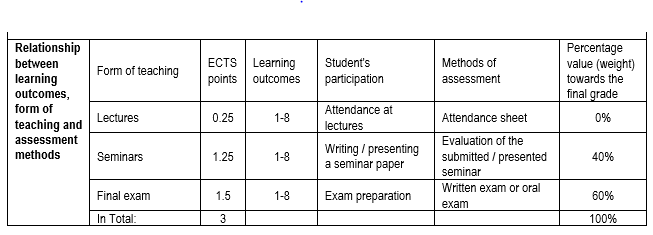The goal of this course is to learn about terms, occurrences and problems from the field of hygiene and epidemiology. Another goal is to enable students to identify and assess causes and consequences as well as to apply and analyse procedures from the nursing domain of hygiene and epidemiology.
General epidemiology
Epidemiologic terms and epidemiologic measuring
Understanding factors that cause disease, route of transmission and how one gets infected
Segment of primary and secondary prevention against infectious diseases
Measures of protection with non-infectious diseases
Special epidemiology
Epidemiologic characteristics of chronic non-infectious cardiovascular diseases, malignant processes of different sites, mental disorders, diabetes and other non-infectious diseases
Immunisation
Hygiene
Personal hygiene, hygiene in a group
Influence of environmental factors (food, water, soil, air, light) on a human’s physical and mental health
Influence of social factors (family, community) on a human’s physical and mental health.
Obavezna literatura:
- Puntarić D, Ropac D. Opća epidemiologija. Zagreb: Medicinska naklada; 2004.
- Ropac D, Puntarić D, i sur. Epidemiologija zaraznih bolesti. Zagreb: Medicinska naklada; 2010. (izabrana poglavlja)
- Vorko-Jović A, Strnad M, Rudan I, i sur. Epidemiologija kroničnih nezaraznih bolesti. Zagreb: Medicinska naklada; 2010. (izabrana poglavlja)
- Puntarić D, Miškulin M, Bošnir J, i sur. Zdravstvena ekologija. Zagreb: Medicinska naklada; 2012. (izabrana poglavlja)
Dopunska literatura:
1. Vorko-Jović A. i sur. Priručnik za seminare i vježbe iz epidemiologije, Medicinska naklada, Zagreb, 2002.
Upon completion of this course, students will be able to:
- explain the definition and tasks of epidemiology;
- describe and apply epidemiological research methods, epidemiological measurements and concepts;
- identify the main hygienic-epidemiological phenomena and problems in the community;
- explain the causes of certain diseases, as well as methods of their prevention;
- present the significance of a particular hygienic-epidemiological problem;
- analyze groups of diseases according to their epidemiological characteristics;
- analyze the existing data of importance for the community and interpret the impact of certain preventive measures on the movement of these diseases in a given period;
- evaluate preventive measures in the field of nursing practice based on existing community severity parameters.



